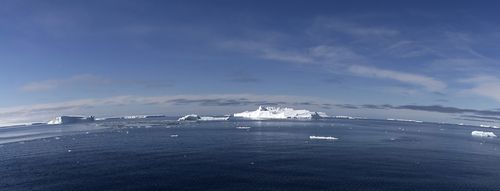Global warming is bringing all sorts of change to ecosystems. Glass sponges are turning out to be one of the beneficiaries.
Glass sponges are a class of sponge made of silicate skeletons. Most of them live between 1500 and 3000 feet below the surface of the ocean. They are found in every ocean, but are most common in the Antarctic Ocean.
The collapse of the Larsen Ice Shelf at the turn of the millennium opened the sea underneath to sunlight. Phytoplankton bloomed, becoming a plentiful food source for the animals in the area. Scientists returning to the area after four years found the glass sponge population had tripled since the last visit.
As the climate changes, ecosystems will become dramatically different. Some species will flourish, while others will disappear. The glass sponges will, at least temporarily, flourish.
Weddell Sea photo via Shutterstock


You must be logged in to post a comment.